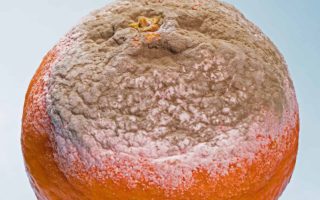
In early fall, many people begin experiencing seasonal allergies as a result of ragweed pollen. As the fall goes on, though, those allergies persist, even though the pollen subsides. This is usually because of a second contributing factor: mold. Mold allergies are an ofter-overlooked component of seasonal allergic reactions. Here’s what you need to know about fall mold allergies and what you can do to keep your symptoms minimal.
What Triggers Fall Mold Allergies?
While people with mold allergies can have reactions at any time, there are a large number of potential triggers associated with late fall. First and foremost, fallen leaves dampened by autumn rains offer the perfect conditions for growing mold. As the leaves begin to decompose, they become more and more conducive to mold growth.
While leaves are the major drivers of mold allergies in the autumn, there are also other sources. Rotting pumpkins, for example, are often covered in mold. Likewise, cornstalks displayed as decorations can start to grow mold when they get wet.
It’s important to understand, though, that it isn’t the mold itself that triggers respiratory allergies. Instead, it’s the spores that molds release in order to reproduce. When a person with mold allergies breathes in these spores, he or she can develop coughing, sneezing, runny nose, itchy eyes and other common allergy symptoms.
How to Control Mold Allergies
As with all allergies, the key to controlling mold allergies is to limit exposure to the allergen. In this case, that means having less exposure to mold spores. People who suffer from mold allergies can control their symptoms by spending less time outdoors, particularly during and immediately after the autumn rainy season. If you have moderate to severe mold allergies, it’s also a good idea to have someone else rake and bag the leaves in your yard. Raking leaves can stir up mold spores, which in turn tends to aggravate mold allergies.
To help keep spores away, you can also use a home air purifier with a HEPA filter. Mold spores are large enough for HEPA filter material to capture quite effectively. For even more protection, you can consider using an air purifier that also features a UV lamp. UV light has the ability to neutralize biological contaminants in the air, including mold spores. To find the right unit for your needs, browse out complete selection of air purifiers for mold.
While fall mold allergies can be unpleasant, they are manageable as long as you can avoid the spores that trigger them. Simple behavioral changes are often enough to keep allergies under control. If you suffer from allergies that last after the ragweed pollen is largely gone, consider using an air purifier and avoiding mold sources to help minimize your symptoms.